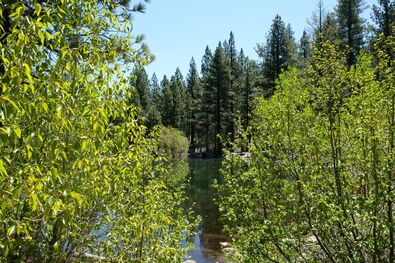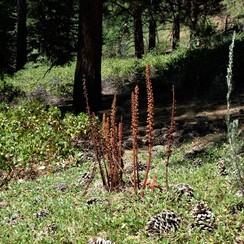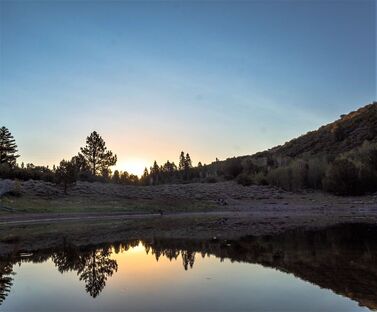|
8/26/2020 1 Comment The Great American Outdoors Act Back in 1965 President Lyndon B. Johnson signed into law the Land and Water Conservation Fund (LWCF) to provide federal, state and local governments funding for recreation (tennis courts, ballfields, playgrounds, and swimming pools in underserved communities) and the protection of national natural treasures, such as parks and protected forests. While the funds have been utilized on projects both large and small, helping state agencies and local communities acquire nearly seven million acres of land, over the past 50+ years most of the money has been diverted to other purposes and these areas have been neglected. On June 17th of 2020 the Great American Outdoors Act (Senate Bill 3422) was passed with bipartisan support from the U.S. Senate. How big of a deal is it? It will be funding the LWCF $900 million per year (the original amount) and $1.3 billion over the next five years for the repair and maintenance of roads, housing, toilets, trails, and walkways in our National Parks. The act is a success story for hunters, anglers, and other conservationists who have been trying to permanently authorize the LWCF and get it funded for this amount. What an incredible accomplishment for the natural beauty of this country! Stay tuned to see the improvements we have planned for the park! References: https://www.msn.com/en-us/news/politics/why-the-great-american-outdoors-act-is-such-a-big-deal/ar-BB15VqEd https://en.wikipedia.org/wiki/Land_and_Water_Conservation_Fund
1 Comment
8/19/2020 3 Comments 10 Tips for Helping the EarthAlthough Earth Day is in April, at Galena Creek we believe every day is a great day to think about the Earth and make positive changes! Check out these tips to learn about small things you can do to improve our planet.
 Take a walk around the Galena Creek Recreation Area, and you might notice this odd-looking, red plant. They're starting to pop up around the park, and often they are found next to last year's stalks! Pinedrops are a peculiar species in that they do not contain Chlorophyll - the pigment that makes plants green and allows them to photosynthesize. This means that Pinedrops must steal their nutrients from surrounding species to survive; in other words, they are a parasitic plant. When the plant initially sprouts, it first "digs" into the soil in search of a "host" - typically fungi and the roots of nearby trees - and then shoots upward to begin bearing fruit. This is why Pinedrops are found in close proximity to larger species such as pine trees. Pinedrops can be identified by their tall, skinny frames and bulb-like fruit. They can be found growing throughout the park between June and August, though the strongest stalks make it through winter and are still common even this time of year. Come for a walk around the Galena Recreation Area and see how many Pinedrops you can find!  Chruch's Pond at sunset. Photo by Jake Weinberger Chruch's Pond at sunset. Photo by Jake Weinberger If you are motivated to hike a moderate to difficult-level 6-mile path then the journey to Church’s Pond via the Jones-White Loop Trail is worth your time! Although it is heavily trafficked, it offers beautiful scenic views while being engrossed entirely in a well-shaded forest. This trail is journeyed by hikers, nature trips, and snowshoers. The first half a mile up the trail offers the calmest leg of the journey, along a peaceful creek, before ascending the mountain side via multiple switchbacks. If you turn around at 2.5 miles of the trail into the clearings you can see the full range view from Reno to Washoe City. While most people do stop here and turn back, you can continue on another 0.7 miles and reach Church’s Pond, if you are the more adventurous-type. Church’s Pond is named after James Church, who was a University of Nevada-Reno professor that figured out how to measure the water content of the Sierra Nevada snowpack in 1909. The pond is a still, small snow-melt basin below Mt. Rose that sits on top of the 2,000+ foot trail. Even though this peaceful pond may look somewhat inviting from a distance, if you dare to get in, watch for leeches! Sources: https://www.alltrails.com/trail/us/nevada/churchs-pond-via-jones-white-creek-trail https://allaroundnevada.com/churchs-pond/ |
AuthorThis blog is managed by the staff and volunteers of Galena Creek Visitor Center. We write about parts of the natural world that we find fascinating and want to teach others about, as well as keeping you updated on the Visitor Center and park. If you want to learn more, please sign up for our monthly newsletter, where we share upcoming events, updates on the ecology of the park, and highlights from each month. Archives
October 2021
Categories |
 RSS Feed
RSS Feed
